Abstract
1. An investigation of central cholinoceptors in the mouse has been made by injecting cholinomimetic drugs into the cerebral ventricles and seeing how their effects were modified by prior administration of atropine-like substances and other drugs.
2. Carbachol or oxotremorine injected in small doses intracerebroventricularly into conscious mice caused hypothermia, gross tremor and a variety of parasympathomimetic effects including lachrymation and salivation. Acetylcholine injected in this way was active only in much larger doses.
3. Methacholine and pilocarpine also caused a variety of parasympathomimetic effects after intracerebroventricular injection but virtually no hypothermia or tremor.
4. Nicotine injected intracerebroventricularly caused mild hypothermia, fine tremor but no parasympathomimetic effects.
5. Atropine-like drugs, tricyclic antidepressants and amphetamine antagonized the hypothermia induced by intracerebroventricular carbachol or oxotremorine.
6. The sites of action of the atropine-like drugs are in the brain; those of the tricyclic antidepressants and amphetamine are in the periphery probably on heat generating β-adrenoceptor mechanisms.
7. It is concluded that the atropine sensitive cholinoceptors in the brain vary in their sensitivities to cholinomimetic drugs, other than acetylcholine, and may exist in isoreceptor forms.
8. Peripheral atropine sensitive cholinoceptors may also exist in isoreceptor forms.
Full text
PDF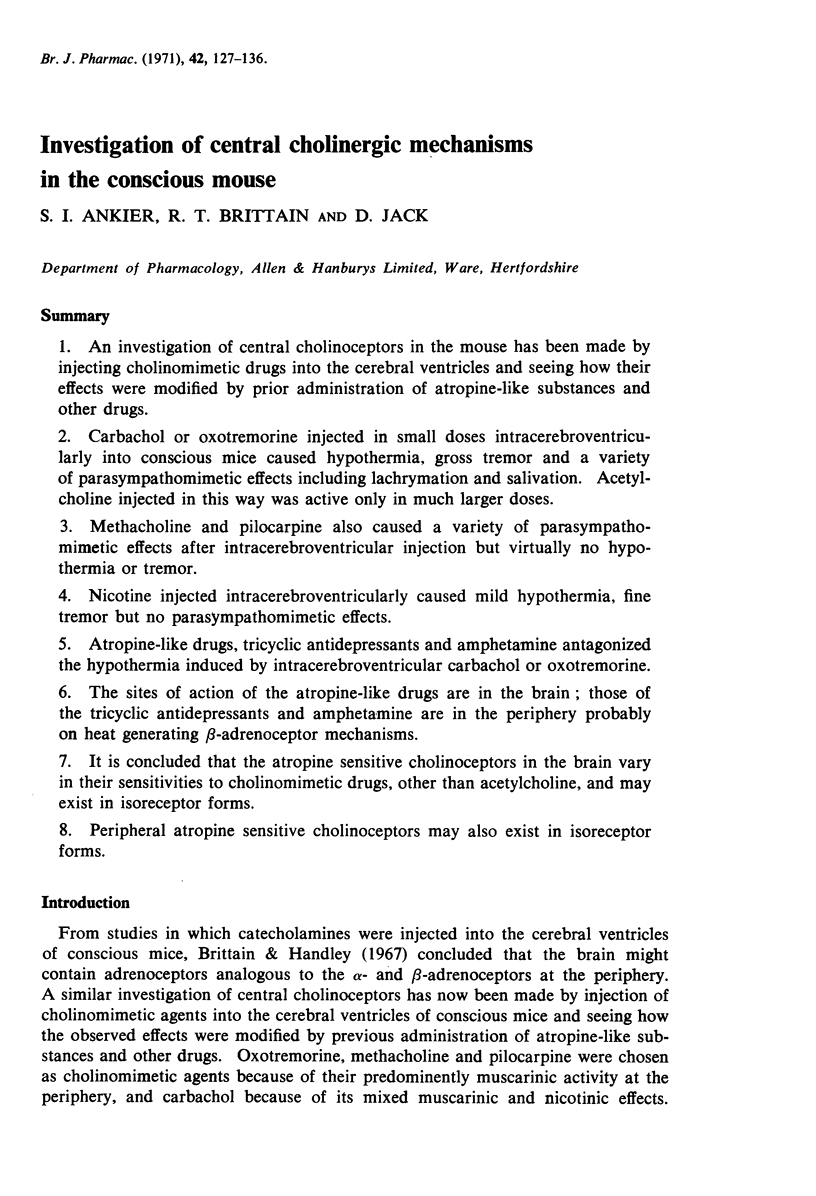
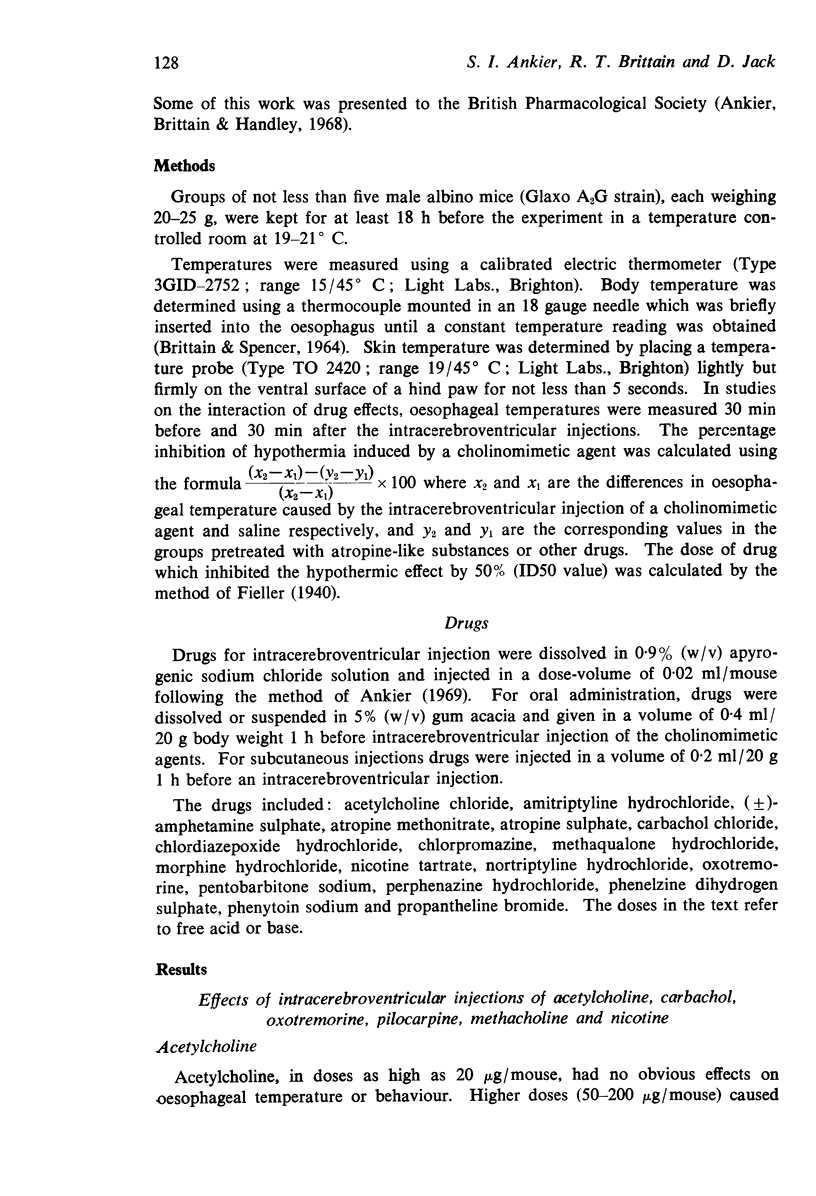
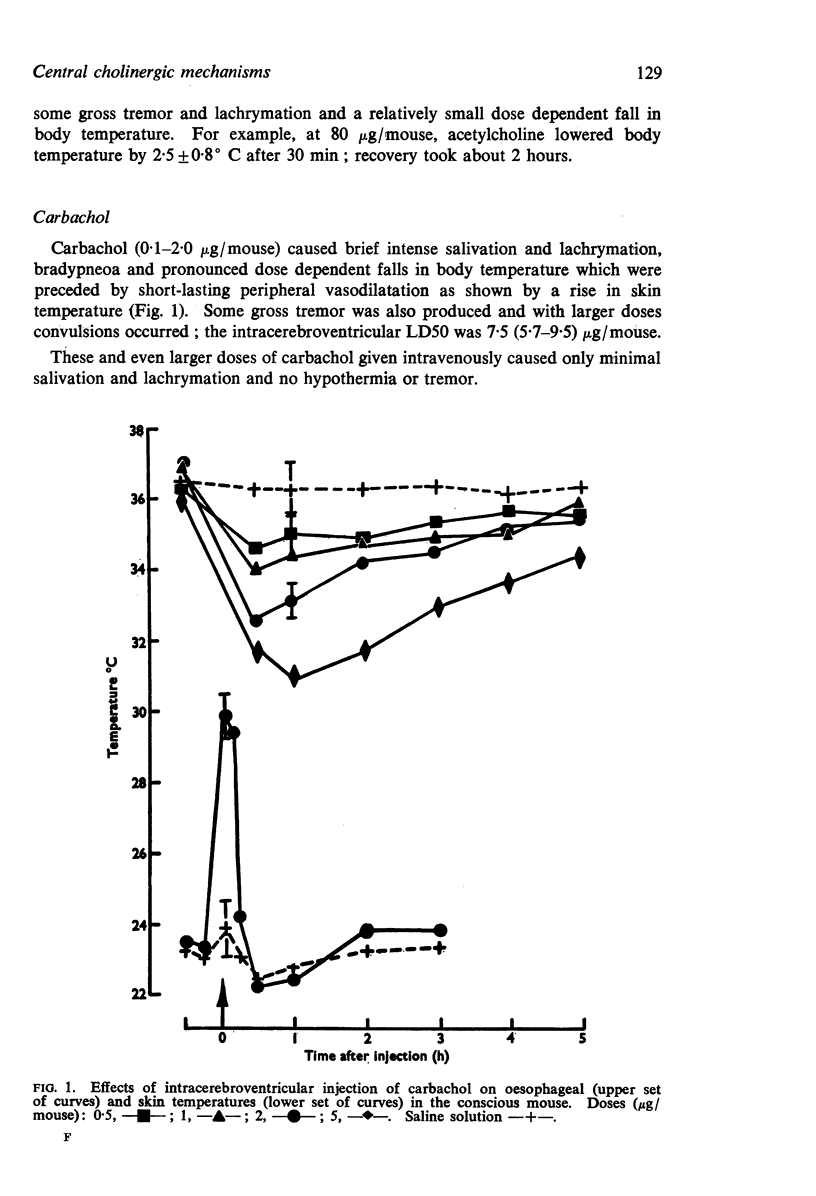
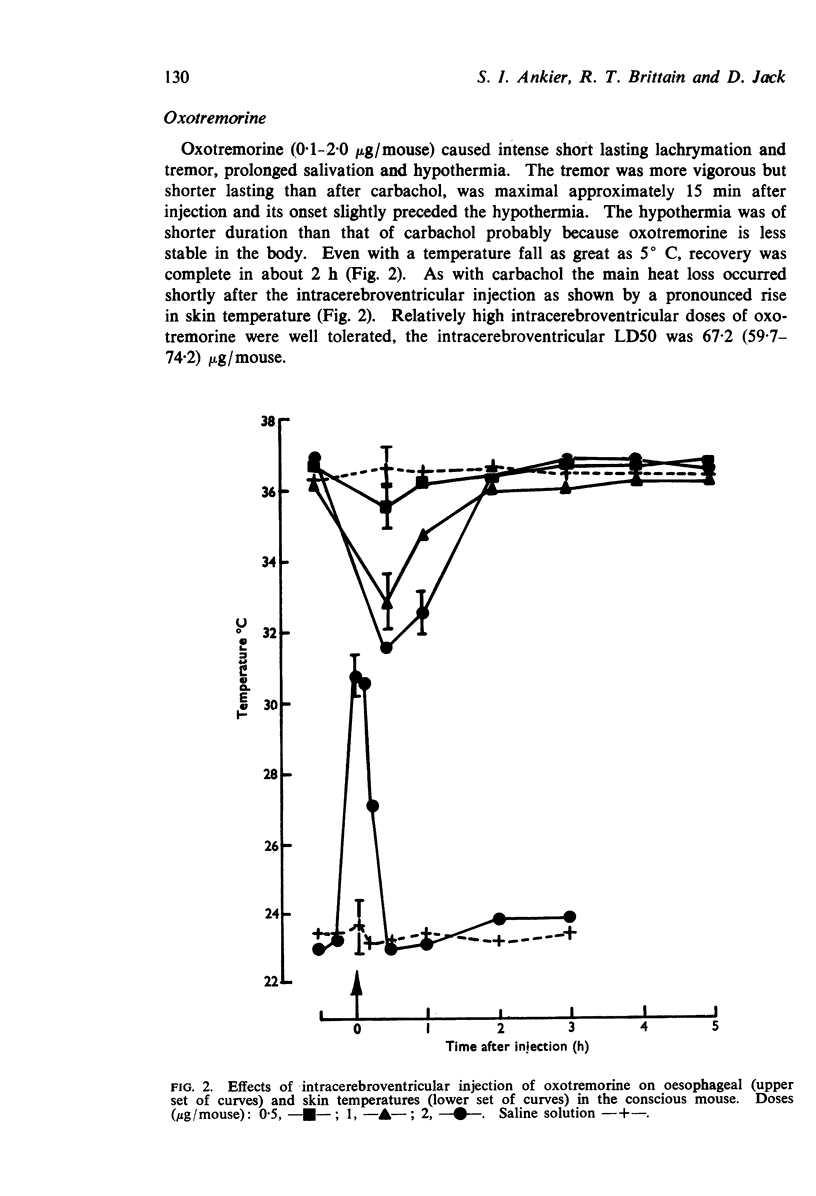

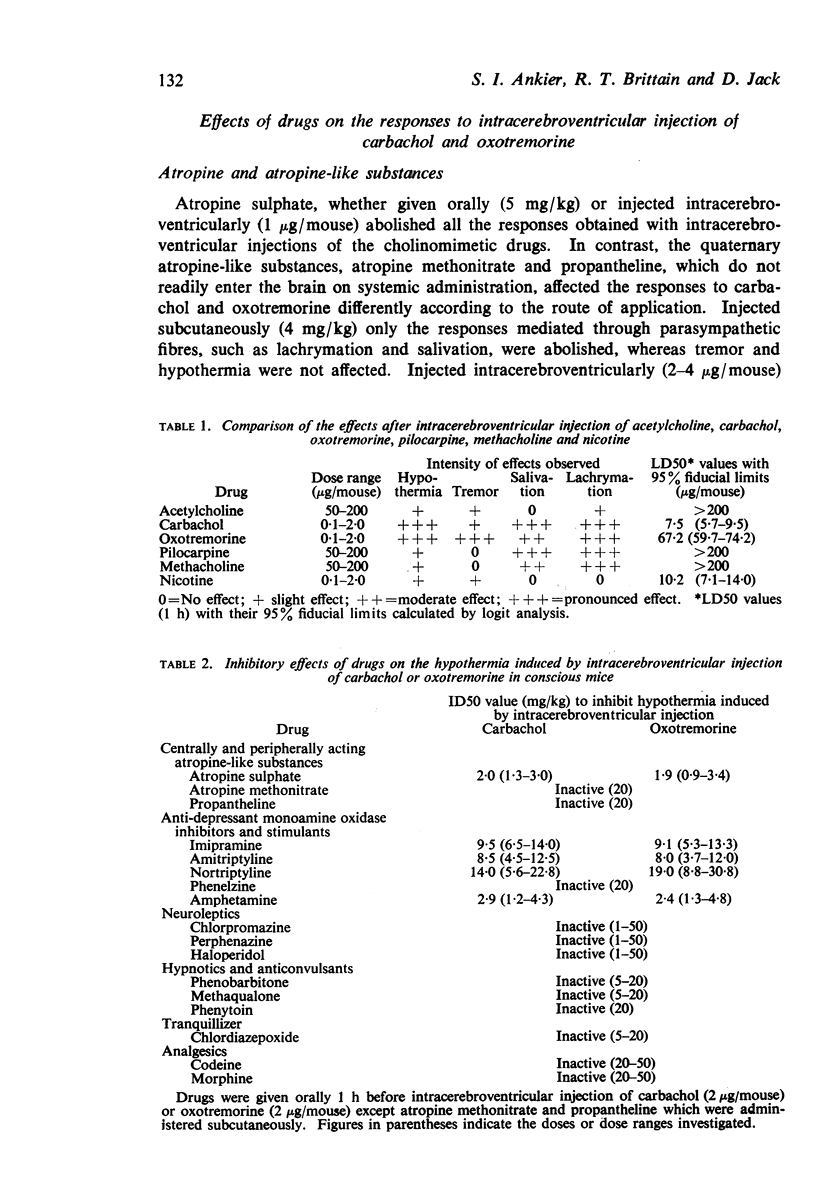
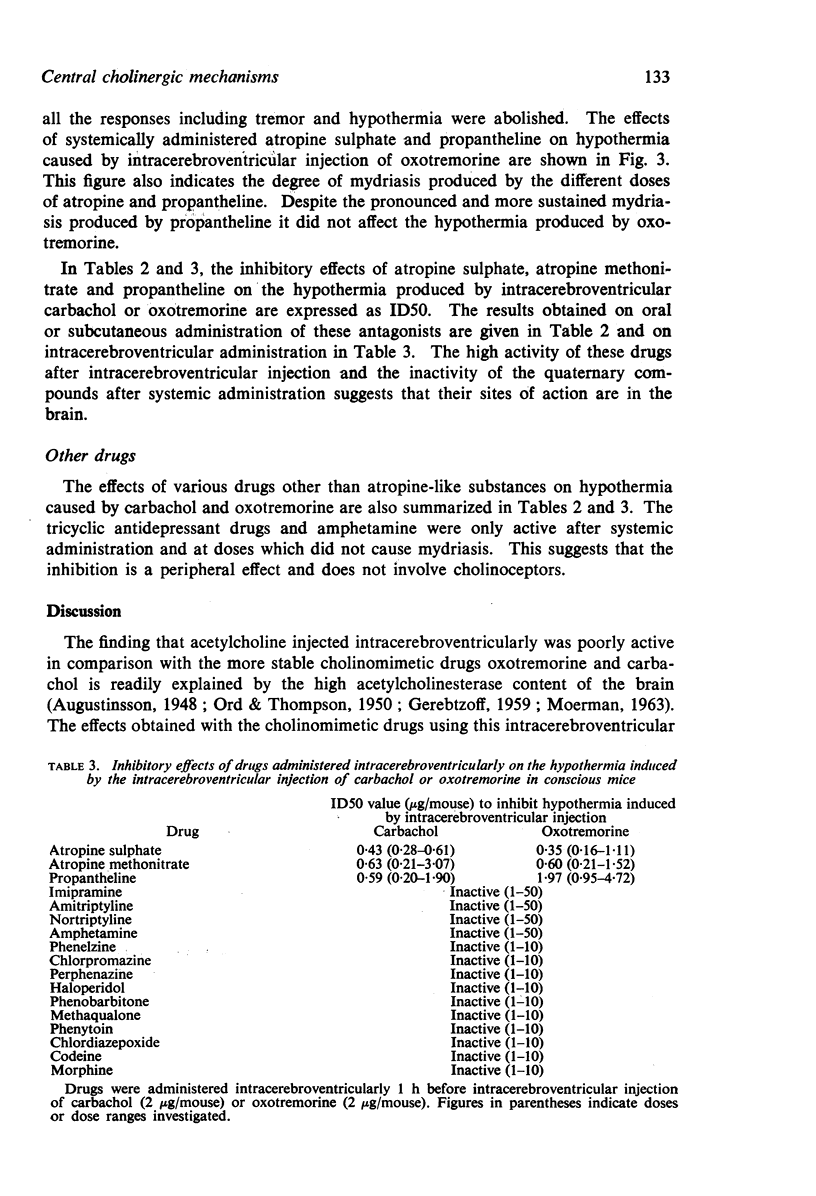
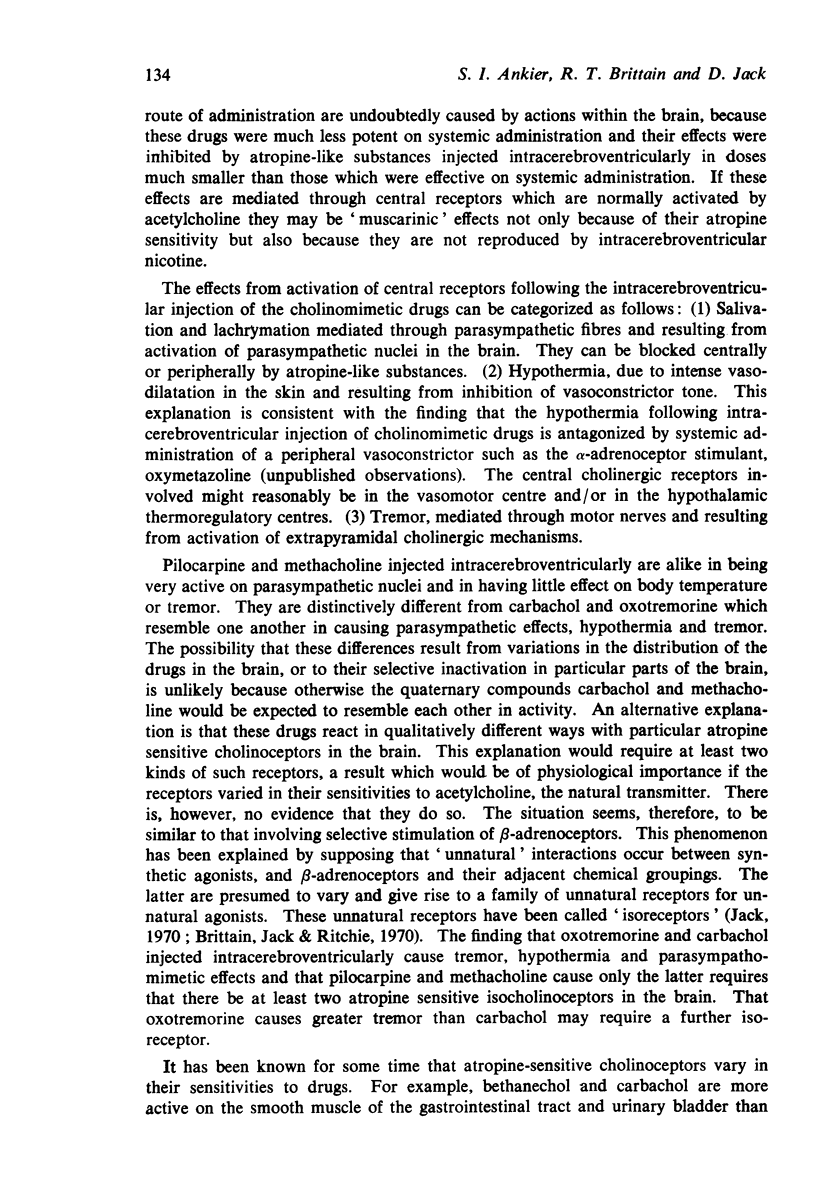
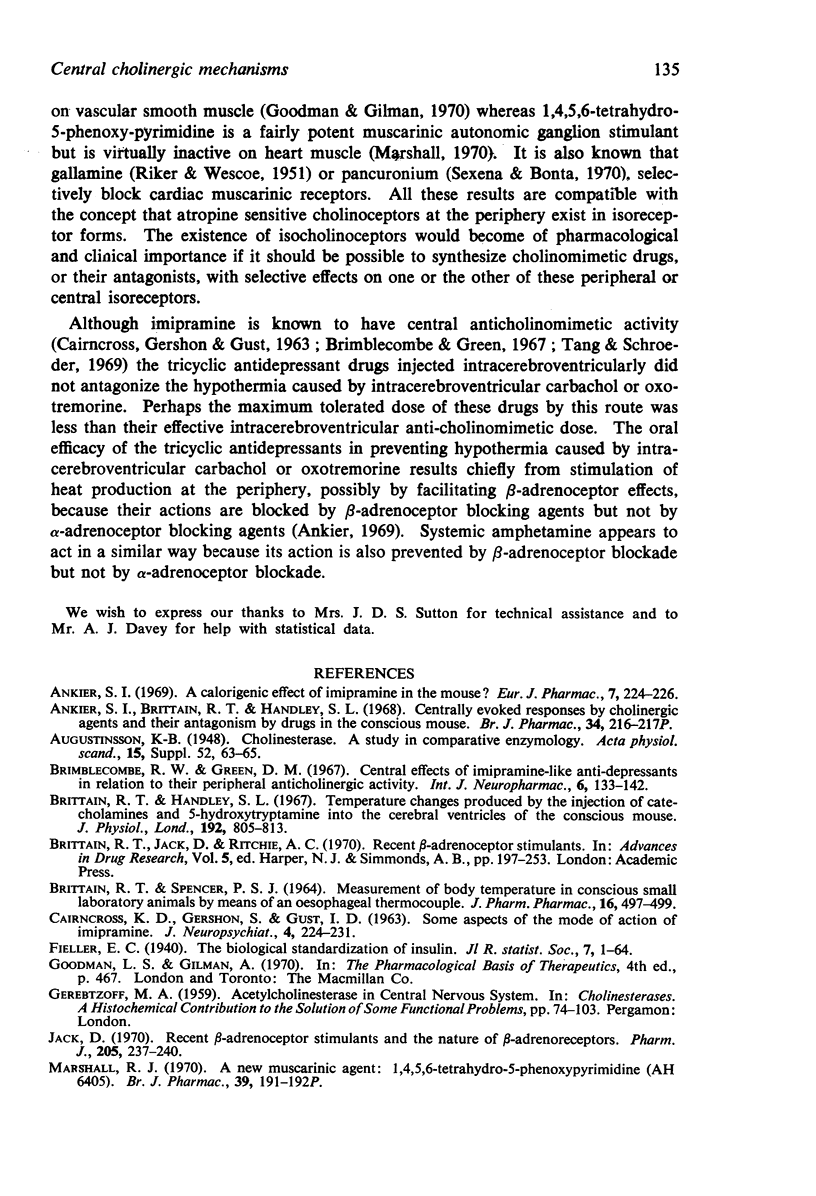
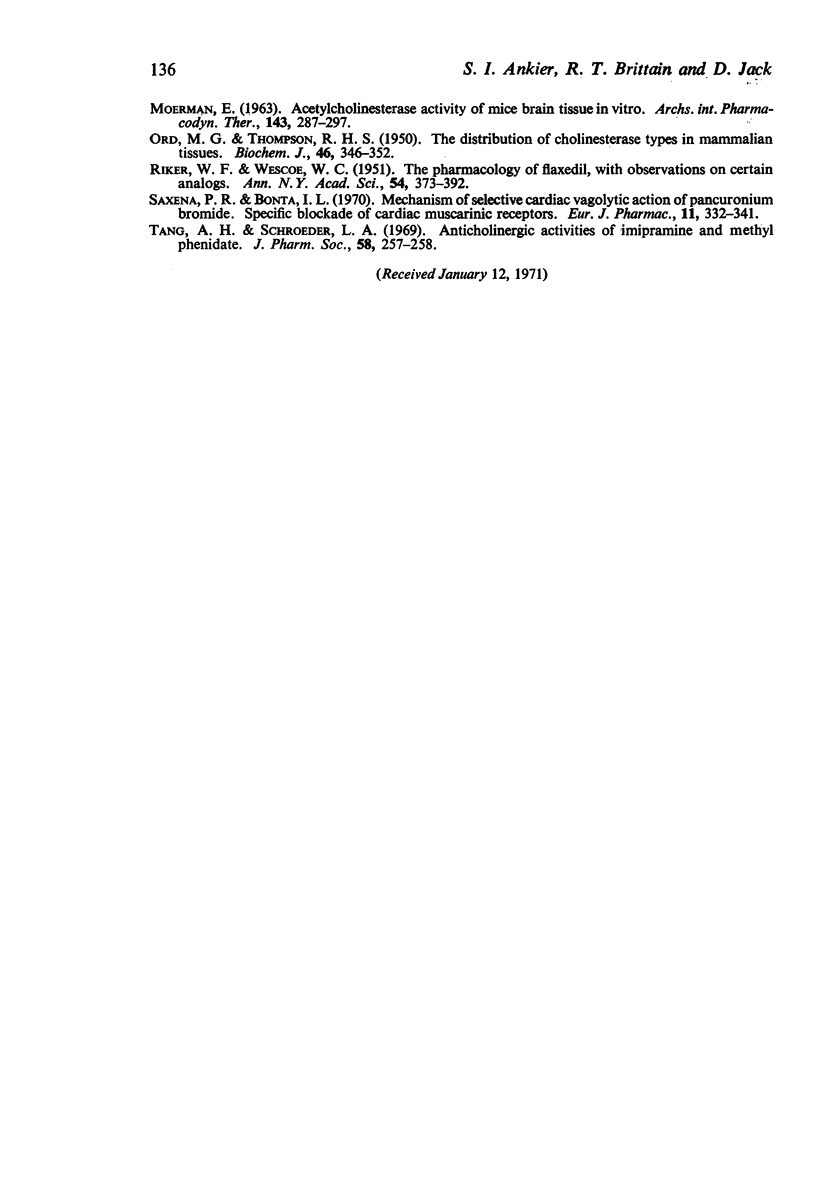
Selected References
These references are in PubMed. This may not be the complete list of references from this article.
- Ankier S. I. A calorigenic effect of imipramine in the mouse? Eur J Pharmacol. 1969 Aug;7(2):224–226. doi: 10.1016/0014-2999(69)90015-6. [DOI] [PubMed] [Google Scholar]
- Ankier S. I., Brittain R. T., Handley S. L. Centrally evoked responses by cholinergic agents and their antagonism by drugs in the conscious mouse. Br J Pharmacol. 1968 Sep;34(1):216P–217P. [PMC free article] [PubMed] [Google Scholar]
- BRITTAIN R. T., SPENCER P. S. MEASUREMENT OF BODY TEMPERATURE IN CONSCIOUS SMALL LABORATORY ANIMALS BY MEANS OF AN OESOPHAGEAL THERMOCOUPLE. J Pharm Pharmacol. 1964 Jul;16:497–499. doi: 10.1111/j.2042-7158.1964.tb07501.x. [DOI] [PubMed] [Google Scholar]
- Brittain R. T., Handley S. L. Temperature changes produced by the injection of catecholamines and 5-hydroxytryptamine into the cerebral ventricles of the conscious mouse. J Physiol. 1967 Oct;192(3):805–813. doi: 10.1113/jphysiol.1967.sp008332. [DOI] [PMC free article] [PubMed] [Google Scholar]
- Brittain R. T., Jack D., Ritchie A. C. Recent beta-adrenoreceptor stimulants. Adv Drug Res. 1970;5:197–253. [PubMed] [Google Scholar]
- CAIRNCROSS K. D., GERSHON S., GUST I. D. Some aspects of the mode of action of imipramine. J Neuropsychiatr. 1963 Apr;4:224–231. [PubMed] [Google Scholar]
- Marshall R. J. A new muscarinic agent: 1,4,5,6-tetrahydro-5-phenoxypyrimidine (AH 6405). Br J Pharmacol. 1970 May;39(1):191P–192P. [PMC free article] [PubMed] [Google Scholar]
- Ord M. G., Thompson R. H. The distribution of cholinesterase types in mammalian tissues. Biochem J. 1950 Mar;46(3):346–352. doi: 10.1042/bj0460346. [DOI] [PMC free article] [PubMed] [Google Scholar]
- RIKER W. F., Jr, WESCOE W. C. The pharmacology of Flaxedil, with observations on certain analogs. Ann N Y Acad Sci. 1951 Oct;54(3):373–394. doi: 10.1111/j.1749-6632.1951.tb39932.x. [DOI] [PubMed] [Google Scholar]
- Saxena P. R., Bonta I. L. Mechanism of selective cardiac vagolytic action of pancuronium bromide. Specific blockade of cardiac muscarinic receptors. Eur J Pharmacol. 1970;11(3):332–341. doi: 10.1016/0014-2999(70)90009-9. [DOI] [PubMed] [Google Scholar]
- Tang A. H., Schroeder L. A. Anticholinergic activities of imipramine and methylphenidate. J Pharm Sci. 1969 Feb;58(2):257–258. doi: 10.1002/jps.2600580230. [DOI] [PubMed] [Google Scholar]


